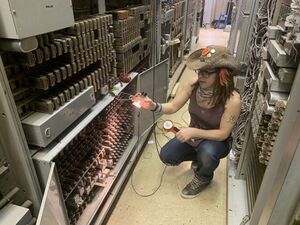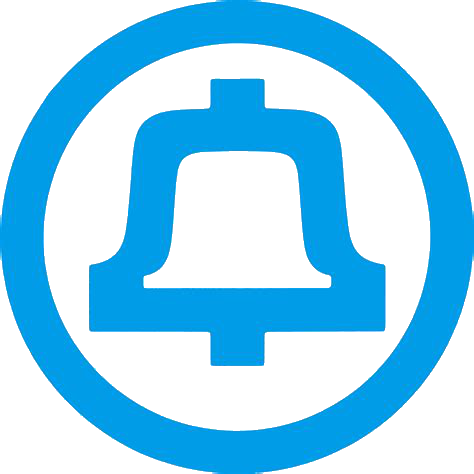Sender
For other uses, see Sender (disambiguation).

A sender is a circuit in a switching system that is responsible for communicating with the outside world. A sender circuit handles one call at a time, and since telephone switching systems must be able to handle many simultaneous calls, the number of senders in each switch must be sufficient to handle requests for service during the heaviest traffic periods. Senders are used in the Panel system, and in all of the various crossbar switches developed by the Bell System.
Overview
The sender concept was developed to meet the needs of large-city telephone switching systems, where the total number of subscriber lines and multiple central offices throughout the city required complex switching arrangements that were not easily handled by the direct control systems, such as the step-by-step system. These limitations included inefficient trunking in large service areas, and a limited ability for growth and reorganization as additional subscribers were added. The introduction of senders into switching systems allowed the subscriber's dial pulses to be registered, then translated into a physical location on the switching fabric, either in the local office, or in a distant office. Once the sender received the translation, it directed the switching fabric to the correct terminal completing the connection to the called party. Because the dialed digits from the subscriber were stored, and translated, there was no direct correlation required between the dialed number, and the actual location of the trunk(s) or subscribers on the switch itself. This meant that as new telephone exchanges were added, a translation could be updated to include the new exchange without expensive and time-consuming modifications to the telephone switch.
History
One of the first US patents filed for this concept was granted to Western Electric in 1913. This was developed in the US by the Bell System and was first widely used in the Panel Machine Switching System. As machine switching exchanges became commonplace, senders also played a critical role in communication between central offices of different types. For example, in a given city, there may be several central offices with different kinds of telephone switches that all must inter-operate with each other. As technology improved, better signaling methods were devised, but backward compatibility with existing exchanges had to be maintained. Thus, senders were developed to send and receive information in a wide variety of "protocols", including revertive pulse, MF, dial pulse, DC key pulse, and PCI.
See Also
The specific ways in which a sender performed was dependent on the switching system that it was a part of. For a more in-depth discussion of different types of senders, read the following articles. Maybe we should even make this a whole category.
